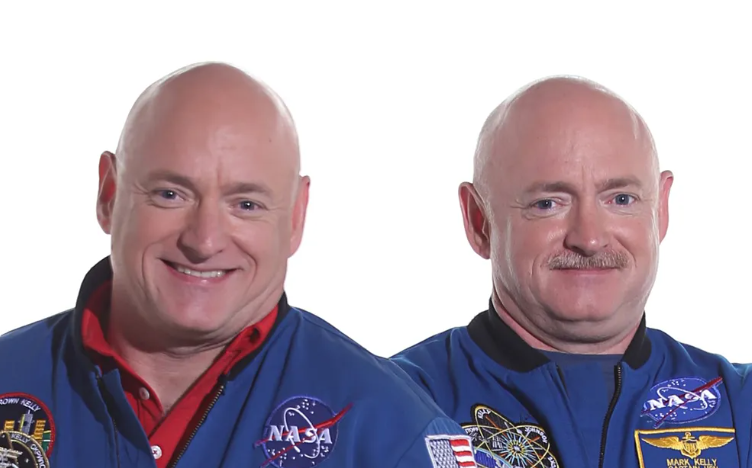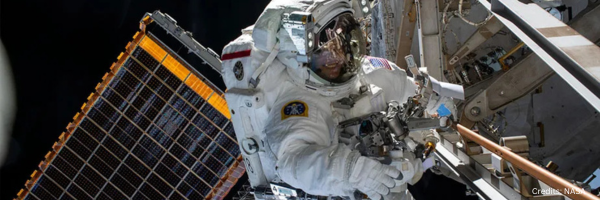What is Space Health Research and Why Does it Matter?

Imagine this: It’s 2035, and the first humans have just set foot on Mars. But instead of celebrating, they face a serious problem—half the crew struggles to walk because their muscles and bones have weakened after months in space. Their immune systems are compromised, and even small injuries take longer to heal. The harsh environment, exposure to cosmic radiation, and psychological stress of being millions of miles away from Earth all take a toll on their health.
This isn’t science fiction—it’s a challenge we must solve today if we want deep-space exploration to succeed. Before we can send humans to Mars, establish lunar bases, or make space tourism accessible to all, we need to fully understand how space affects the human body. This is where space health research comes in. It’s the key to ensuring that astronauts (and one day, civilians) can survive and thrive beyond Earth’s atmosphere.
What is Space Health Research?
Space health research is the scientific study of how space travel impacts human health, focusing on the physiological, psychological, and biochemical challenges astronauts face in extreme environments. Unlike life on Earth, space presents unique stressors such as microgravity, cosmic radiation, isolation, and altered circadian rhythms, all of which can significantly affect the human body.
One of the best-known examples of space health research is NASA’s Twins Study, where astronaut Scott Kelly spent nearly a year aboard the International Space Station (ISS) while his identical twin, Mark Kelly, remained on Earth. Scientists studied how long-duration spaceflight altered Scott’s genes, immune system, and microbiome.

Key findings from the study include:
- Bone & Muscle Loss: Scott experienced reduced bone density and muscle mass.
- Cardiovascular Changes: Weakened heart function and increased long-term health risks.
- Vision Impairment: Fluid shifts in the brain led to Spaceflight-Associated Neuro-ocular Syndrome (SANS).
- Genetic & Immune System Changes: Alterations in gene expression and immune response, though most returned to normal post-flight.
- Microbiome Shifts: Changes in gut bacteria due to space diet and environment.
NASA astronauts Sunita Williams and Barry Wilmore recently returned to Earth after an unplanned nine-month stay in space, far exceeding their intended one-week mission. Originally launched in June 2024 aboard Boeing’s Starliner, technical issues delayed their return until early 2025. Upon their return on March 18, 2025, Wilmore and Williams faced the usual re-adaptation to Earth’s gravity, with medical teams monitoring their balance, coordination, and overall health. Missions like theirs mirror the conditions astronauts will face on future Moon and Mars expeditions, making their data invaluable for planning long-duration spaceflights.
Today, space health research is expanding beyond government-led studies. A new era of global collaboration is underway, with agencies, private companies, and researchers worldwide working together to advance human health in space. Organizations like NASA’s Human Research Program (HRP), the European Space Agency (ESA), Japan’s JAXA, the Translational Research Institute for Space Health (TRISH), and private spaceflight companies such as SpaceX, Blue Origin, and United Launch Alliance (ULA), are conducting groundbreaking studies using astronaut data and ground-based simulations to develop technologies that will benefit both space travelers and people on Earth.
Why Does It Matter in Space and on Earth?
The human body is adapted to life on Earth, where gravity, oxygen levels, and atmospheric protection create an ideal environment. Space, however, is an extreme and unfamiliar place that presents significant health challenges:
1. Space Health is Key to Future Exploration
For humanity to venture beyond Earth—whether to Mars, the Moon, or beyond—we must address the unique health risks of space travel. Long-duration space missions could last years, requiring astronauts to maintain peak physical and mental health despite being millions of miles away from Earth. Space health research is essential to:
- Prevent bone and muscle loss with space-adapted exercise technologies that simulate weightlifting without gravity.
- Develop new shielding techniques to protect astronauts from dangerous cosmic radiation.
- Ensure mental resilience in isolated and high-stress environments.
- Create autonomous healthcare systems for space missions where real-time communication with doctors on Earth is impossible.
Without these advancements, deep-space exploration could put human lives at risk, making missions unsustainable.
2. Space Health Research Benefits People on Earth
Many of the technologies we rely on today were born from space research. From infrared thermometers used during the pandemic to the computer mouse, smartphone cameras, air and water purifiers, and even the continuous insulin pump—NASA’s innovations have found their way into our daily lives. Organizations like the Translational Research Institute for Space Health (TRISH) work with NASA to develop cutting-edge solutions for astronaut health, many of which have led to breakthroughs in medical imaging, eye care, and exercise technology here on Earth.
For example, CT scans and MRIs originated from imaging techniques developed during the Apollo program to map the lunar surface. However, because traditional MRI and CT machines are too large for space, NASA pioneered portable ultrasound devices that work with smartphones. These compact tools are now used in remote areas and emergency settings, enabling fast, accurate diagnoses where traditional imaging isn’t available.
Spaceflight has provided key insights into vision health, leading to the discovery of Spaceflight-Associated Neuro-ocular Syndrome (SANS) in astronauts. In response, NASA developed Oculometric Testing for Detecting/Characterizing Mild Neural Impairment, a portable screening tool for neurological disorders that detects oculomotor signatures and monitors symptom severity.
This non-invasive, eye-movement-based system evaluates neural health by analyzing pursuit initiation, tracking, speed tuning, pupillary responses, and gaze holding through a 5-minute behavioral tracking task. Originally designed for space, this innovation now aids in diagnosing conditions like diabetic retinopathy and glaucoma, enhancing both astronaut health and Earth-based eye care.
Another critical challenge in space is muscle and bone loss. Astronauts exercise for two hours daily to maintain their strength, using NASA’s Advanced Resistive Exercise Device (ARED)—a machine that simulates weightlifting without gravity. Even the materials in today’s athletic shoes were inspired by NASA’s research on protecting astronauts’ feet.
3. Space Tourism and Civilian Spaceflight Make This Research More Urgent
For decades, space travel was limited to highly trained astronauts in peak physical condition. But that’s changing. With commercial space tourism on the rise, more civilians—including those without astronaut-level fitness—will soon be traveling to space.
A major milestone in this shift occurred on September 15, 2021, when the Inspiration4 mission sent four civilians into orbit for three days. This was the first time space health research was conducted on non-professional astronauts, offering new insights into how the human body—without specialized training—adapts to spaceflight.
The mission, supported by TRISH at Baylor College of Medicine, conducted groundbreaking research, including:
- Blood and saliva sample collection to study stress, inflammation, and immune responses.
- Heart rate and oxygen monitoring using wearable devices (Apple Watches).
- Cognitive and behavioral tests to track changes in reaction time and mental function before, during, and after spaceflight.
TrialX: Powering the Future of Space Health Research
At TrialX, we are at the forefront of advancing space health research with cutting-edge clinical trial technologies. Our TrialX Advance platform enables virtual, hybrid, and decentralized clinical trials, integrating mobile apps, eConsent, eCOA, virtual visits, and wearables for seamless data collection.
In partnership with TRISH, we developed the EXPAND database, the first open, standards-based data repository for commercial spaceflight biomedical research. Since 2021, the EXPAND database has stored over 1 million health data points from 17 astronauts across six missions, including Inspiration4, MS-20, Axiom-1, Axiom-2, Axiom-3, and Polaris Dawn along with analog missions from the Australian Antarctic Division. The system has been designed to facilitate ingesting diverse health and environmental data from multiple sources. This includes qualitative survey data collected via mobile applications, DICOM images from portable ultrasound devices, and wearable sensor data such as heart rate, spo2, sleep, and electrocardiogram readings. Additionally, the platform supports the integration of biospecimen information, including genomic data, as well as data from Electronic Health Records (EHR).
To support real-time research, we also built the EXPAND Tablet App, which was used in the Polaris Dawn mission, enabling pre-, in-, and post-flight data collection through surveys and connected medical devices. Designed with secure, scalable architecture, EXPAND database facilitates data sharing, analytics, and collaboration—breaking traditional research silos and driving new insights into space health.
The Impact of Space on Future Medicine
As humanity pushes the boundaries of space exploration, the future of space health research will be critical to sustaining long-duration missions beyond Earth. Understanding how space affects the human body is not just about astronaut safety—it’s about enabling deep-space travel and advancing medical innovations that benefit people on Earth. From combating muscle loss and radiation exposure to improving telemedicine and remote patient monitoring, research in space health is driving breakthroughs with wide-ranging applications. With growing commercial spaceflight opportunities and international collaboration, the field will continue to evolve, shaping the next era of human space exploration and medical science.
To learn more about our remote research data collection platform, visit here.


